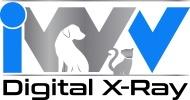Diagnostic X-Rays – The Standard for Better Animal Health
Today, diagnostic X-rays have become the standard for high quality care and evaluation of conditions below the gum line or internal to the tooth structure. Because periodontal disease has become the most common diagnosis in companion animal medicine, providing better patient care means having a full understanding of your patient's oral health.
But radiography is not just about determining the current condition of teeth and bones, it should also be used to establish a baseline for future changes. Because inadequate dental care and treatment may lead to other systemic diseases, preventative care before larger problems arise can save owners time, money and possible heartbreak, should such complications occur.
According to an April 2004 article in DVM Magazine, there are significant reasons why you would want to have good dental images in order to provide optimal care of your patients, including:
- To support most treatment decisions
- In evaluating an area for root fragments, where teeth are not clinically apparent
- In determining the cause of chronic nasal discharge
- To properly evaluate tooth vitality
- To determine the number of permanent teeth for a kitten or puppy before secondary teeth eruption
- For anatomical orientation and documentation before extraction
- For evaluation after extraction, to confirm all root fragments were removed
- For a pre-operative evaluation of tumor margins, to help prepare and guide surgery
- In doing a treatment planning evaluation, when periodontal disease is present
- To evaluate feline odontoclastic resorptive lesions (FORLs)
- To evaluate jaw fractures.
- To evaluate oral and facial swellings
- To evaluate pre-operative, intra-operative and post-operative endodontic treatment
This same article quotes two studies conducted by the University of California, Davis* where 226 dogs and 115 cats who presented for dental treatment were given full-mouth radiographic views prior to being given oral examinations. The studies compared the findings of both examinations to determine the diagnostic value of full-mouth radiography. These studies showed:
- In dogs without clinical lesions, radiographs yielded incidental or clinically important findings in 69.5% of cases
- In dogs with clinical lesions, radiographs merely confirmed findings in 24.3% of cases but yielded additional or clinically essential information 72.6% of cases
- In cats without clinical lesions, radiographs yielded incidental or clinically important findings in 45.5% of cases
- In cats with clinical lesions, radiographs merely confirmed findings in 13.9% of cases but yielded additional or clinically essential information 86.1% of cases
But while better patient care is clearly the largest benefit to your practice, proper, responsible use of digital radiography in your practice can also yield a higher financial return, giving both you and your patients' owners better peace of mind.
*Diagnostic value of full-mouth radiography in dogs, Verstraete, F., et. al., AJVR 1998, 59, pgs. 686-691 and Diagnostic value of full-mouth radiography in cats, Verstraete, F., et. al., AJVR 1998, 59, pgs. 692-695
